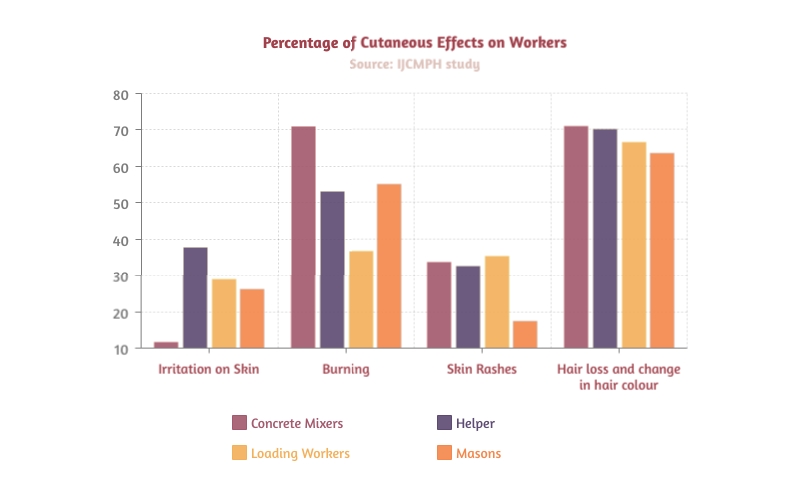Long-term exposure to cement dust is causing severe respiratory and skin ailments to construction workers
By Ayanti Bera
Bengaluru, April 11, 2019.
A large percentage of construction workers, mainly those who work with cement like concrete mixers, loading workers, helpers and masons, are prone to have respiratory tract ailments like persistent cough, breathlessness, wheezing and irritation in throat, as well as aggravating skin conditions.
[media-credit id=32 align=”aligncenter” width=”800″] [/media-credit]
[/media-credit]
According to a study titled “An epidemiological study on effect of occupational exposure of cement” by the International Journal of Community Medicine and Public Health, which sampled 831 construction workers in the southern states of India, nearly 55 percent of the loading workers suffer from persistent cough, and 47 percent experience bouts of breathlessness.
Mathu S., a day-wage construction worker from the Bellary district says, “At the construction site, I mostly mix concrete and do other loading jobs. For one day of work, I earn around Rs. 250-300. I have been working more than 13 years and began to get constant cough after five-six years of work.
All this dust often makes our throat and eyes burn. We do not get much or any safety gears; all we have is this gamcha (thin red coloured cloth) that we tie over our mouth if there is too much dust. But it does not help much.”
The study points out that around 70 percent of workers who work with concrete mixers have burning sensations on their skin and throat. The same percentage of workers experience hair loss, and a change in hair and skin colour.
The study says, “Cement dust is respirable in size due to its micro diameter. The major passage for cement dust is found to be respiratory as well as gastrointestinal tract. Hence, exposure to the cement is considered as a major cause for occupational lung disease.”
Dr. Pradeep R. from the Rajiv Gandhi Institute of Chest Diseases blames the lack of proper protective gear for the respiratory tract ailments of the workers.




